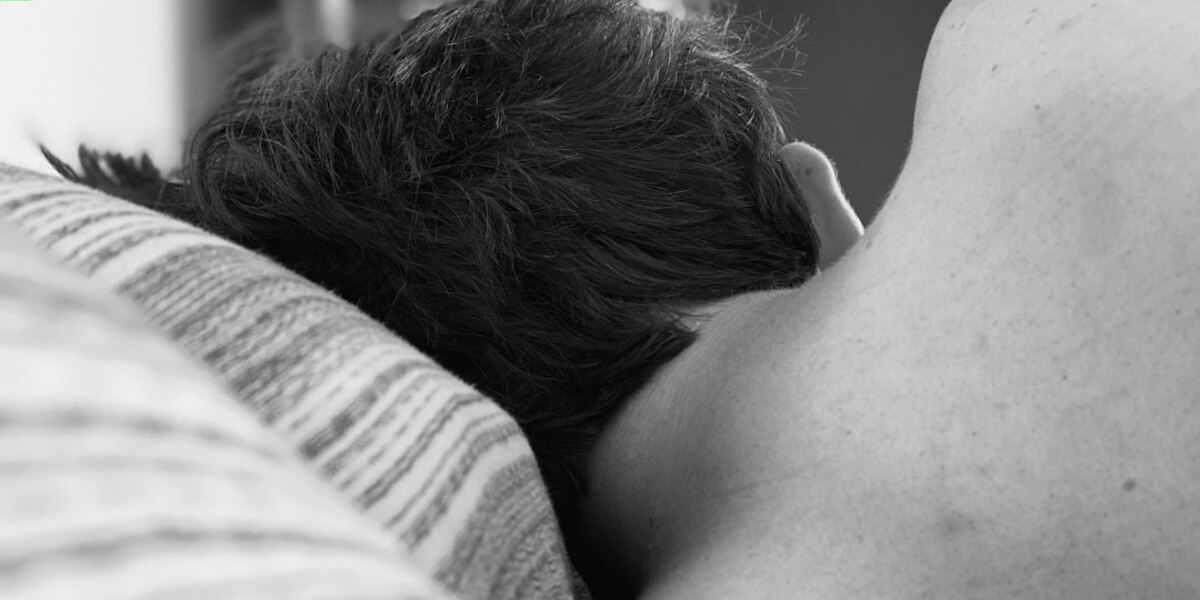Hair Loss Treatment Doctor: Your Go-To Guide for Professional Help
Hair loss can be a distressing experience, often leading to decreased self-esteem and anxiety. When facing this issue, turning towards professional help is highly recommended. A “hair loss treatment doctor” or a trichologist isn’t just an expert in tackling hair issues; they are skilled professionals who evaluate your condition comprehensively to provide the most effective solutions tailored for you.
In today’s era where information overload on websites can leave individuals baffled about their choices regarding treatments, experts’ advice becomes indispensable. This blog post serves as your guide through the maze of options available when considering seeking professional aid for hair-related problems from experienced medical practitioners specializing in treating them: Hair Loss Treatment Doctors.
Did you know?
Did you know that by the age of 35, two-thirds of American men will experience some degree of appreciable hair loss according to the American Hair Loss Association? Seeking help from a professional can boost your chances for successful treatment.
Understanding Hair Loss: Causes and Diagnosis
Hair loss, also known as alopecia, is a common concern worldwide that can affect anyone regardless of age or gender. The primary role in determining the cause and appropriate treatment falls onto an expert – the hair loss treatment doctor. These medical professionals specialize not only in diagnosing various types of hair loss but also providing personalized therapeutic solutions based on individual cases.
The causes for this issue are manifold: hormonal imbalances, genetic predisposition, nutritional deficiencies to name just a few. Your hair follicles have their growth cycles which could be disturbed by any number of factors causing excessive shedding or halting new growth entirely. It’s crucially important to get diagnosed early because recognizing signs promptly leads to more effective treatments.
Dermatologists examine your scalp thoroughly using specialized tools like dermoscopes and conduct necessary lab tests, considering a detailed patient history. They may perform a trichogram (microscopic examination) to assess the health of your follicular units under magnification if needed. These steps lead to the creation of bespoke strategies for treating each unique case effectively, ensuring success and enhancing patient satisfaction while significantly reducing mental stress associated with baldness from 2023 onwards.
Recognizing the Signs of Balding and Thinning
In the journey to understand hair loss, recognizing the signs of balding and thinning is crucial. Early detection often leads to more successful treatment outcomes as guided by a competent hair loss treatment doctor.
Many people begin their quest for a solution when they notice handfuls of strands on their pillow or in their shower drain. However, such occurrences don’t necessarily indicate that you’re going bald – it’s normal to shed about 50-100 hairs each day. But if you spot uneven patches or noticeably thinner areas throughout your scalp, this might be an indication that something isn’t right.
Gradual thinning at the top of your head is one common sign especially among men; typically starting around their late twenties or early thirties. Women may also experience thinning but mostly after hitting menopause due its hormonal changes causing dramatic shifts in hair growth patterns which needs immediate consultation with a specialist.
Another undeniable symptom worth accentuating is receding hairlines; these primarily occur amongst males who then progressively develop M-shaped lines over time leaving them essentially ‘bald’ around those regions unless appropriate intervention measures are taken.
Comprehensive Medical Assessments for Hair Loss
Finding the right hair loss treatment often begins with comprehensive medical assessments. A specialized professional, commonly known as a “hair loss treatment doctor,” conducts these assessments.
In 2023, how does such an assessment proceed? What can you expect in your journey towards treating hair loss?
Next is physical examination that involves analyzing not only your scalp but also other parts of body if needed to determine if there’s systemic reason behind your thinning locks.
Proven Medical Interventions for Hair Restoration
In the world of hair restoration, the importance played by a certified hair loss treatment doctor is unmatched. These medical professionals have spent years mastering strategies and techniques to address various causes of baldness effectively. In 2023, with advancements in scientific technologies and methodologies around every corner, their role has become even more paramount.
Proven medical interventions for restoring hair rely heavily on treating underlying conditions leading to hair fall or thinning besides topical treatments. As instructed by proficient doctors specializing in this field, therapies like Minoxidil (Rogaine) and Finasteride (Propecia) have been delivering promising results globally over the past few decades while also evolving continuously to accommodate recent research findings.
Hence visiting a professional trained specifically for addressing diverse types of alopecia can significantly contribute towards identifying an effective solution holistically tailored according your individual needs expectations.This indeed emphasizes vital essence incorporating comprehensive clinical evaluation consultation when endeavoring restore lost glory mane thereby assuring optimum satisfaction eventual regrowth.
Pharmacological Options Prescribed by Specialists
Pharmacological options have become a game-changer in the field of hair restoration. Curated by professional specialists, these treatments are scientifically backed to tackle different stages and types of hair loss.
One popular choice among patients is Minoxidil, a topical solution prescribed for those with Androgenetic Alopecia. When applied directly on the scalp twice daily, it boosts blood circulation around hair follicles stimulating new growth over time. However, patience is key here as results usually start showing after three months of continuous use.
Another pharmaceutical intervention making waves in the domain is Finasteride – an oral medication available only through prescription from your trusted hair loss treatment doctor. It works by inhibiting production of DHT (Dihydrotestosterone), a hormone known to shrink hair follicles leading them towards ultimate demise.
Adding Spironolactone into regimen can also prove beneficial particularly women suffering from pattern alopecia due its effect reducing testosterone levels body thus slowing down progression condition while promoting healthier thicker locks over period regular usage – definitely worth discussion during your consultation visit!
Surgical Solutions: Transplants and Scalp Reductions
In the realm of medical interventions for hair restoration, surgical solutions have proven to be significantly effective. These typically involve a mix of transplants and scalp reductions, which are highly recommended by many professionals in addressing hair loss issues.
Hair transplant surgery has seen numerous advancements over recent years and is now considered one of the most reliable procedures advised by hair loss treatment doctors globally. The process utilizes existing follicles from parts of the head with richer growth – often known as ‘donor sites.’ These follicles get meticulously relocated to areas experiencing thinning or complete baldness.
One widely acclaimed method is Follicular Unit Transplantation (FUT). It involves extracting small strips of skin embedded with multiple healthy units from various donor regions and implanting them in sections affected by hair fall. An alternative approach – Follicular Unit Extraction (FUE) – opts for individual grafts instead, leading to minimal scarring post-procedure.
Scalp reduction surgeries help reduce visible patches devoid of any growth on your crown area through strategic removals followed by stretching sessions spanning several stages. This procedure ensures that stronger zones cover larger portions while lessening reliance on sparse spots prone to continued shedding cycles.
Recent technological innovations like Robotic Hair Restoration come into play here too; this extremely precise technique facilitates higher success rates combined with reduced downtime ensuring you can return quickly to regular activities.
Innovative Technologies in Hair Regrowth Treatments
The medical world is continually evolving, and so are the treatments for hair loss. The quest to combat thinning strands has brought forth innovative technologies that have turned searchlights on hair regrowth treatments possibilities in recent years. In 2023, top-tier hair loss treatment doctors continue utilizing cutting-edge techniques backed by considerable scientific research to help patients reclaim their confidence through fuller heads of natural-looking Hair.
Stem cell therapy represents a major technological innovation shaking up the hair loss treatment sector. Hair loss specialists recommend this procedure for its high efficiency rate in treating male and female patients with alopecia or baldness. The technique involves:
- Harvesting the patient’s own cells from healthy scalp areas.
- Scientifically treating these cells.
- Implanting them into affected areas to stimulate follicular revival.
Patients typically see growth and visible results within a few months after treatment.
Advances in low-level laser light technology offer hope for effective treatment of thinning or balding, a widespread issue across all ages globally. This therapy boosts blood flow and nutrient delivery to weakened hair follicles, potentially reactivating dormant ones into growth. Both professionals and discerning clients favor this minimally invasive yet highly effective approach for tackling persistent problems like advanced patterned baldness.
Low-Level Laser Therapy (LLLT) under Professional Guidance
Modern hair loss treatments have taken a leap towards scientific advancements, and Low-Level Laser Therapy (LLLT) is one such example that has shown promising results. It’s crucial for this therapy to be administered under the watchful eye of an experienced professional like a hair loss treatment doctor.
Low-Level Laser Therapy employs medical-grade lasers that deliver safe, low-level laser light to your scalp. This painless process energises weak follicle cells causing them to stabilize and stimulate growth again – much like watering plants!
However, its effectiveness rests significantly on consistent sessions over several months as guided by experts in hair regrowth field. A misstep or inconsistency could potentially lead back to square one with thinning strands.
One incredible advantage of LLLT conducted by professionals lies in their expertise & ability to customize each session according to individual needs based on factors such as hair type and progression rate of balding.
While home-based devices are available, these may not offer accurate diagnoses nor optimal customization which can impact outcome drastically – another strong reason why relying upon a certified “hair loss treatment doctor” becomes indispensable.
Finally yet importantly comes monitoring the progress post-treatment- something best left into hands of trained professionals who gauge success rates objectively rather than wishful thinking! They’ll ensure any needed adjustments are made promptly thus maintaining momentum towards achieving full positive effects from this innovative technology.
In conclusion: When considering effective solutions against progressing alopecia conditions; keep faith in qualified doctors offering comprehensive plans incorporating Innovation Technologies including LLLT!
Platelet-Rich Plasma (PRP): A Doctor’s Approach to Stimulating Growth
In the journey of reversing hair loss, Platelet-Rich Plasma (PRP) stands out as a promising innovation. A doctor’s approach to stimulating growth through this technique has shown significant results and is gaining popularity.
Platelet-rich plasma therapy, essentially administered by doctors specializing in hair loss treatments, involves three steps. First, blood is drawn from your body – usually from your arm – and placed into a machine that separates platelets from other components of the blood. Second, these concentrated platelets are then injected back into areas on your scalp experiencing thinning or balding to stimulate regrowth.
What sets PRP apart? It’s its ability to utilize natural biological processes for healing and revival. The high concentration of platelets used in PRP contains proteins called growth factors which play an integral role in wound healing but have been discovered also advantageous for rejuvenating dormant follicles resulting in renewed hair growth.
While research continues around-the-world with different degrees of success reported; many patients treated using the PRP find their locks thicker after few sessions indicating towards visible signs of improvement thus making it an enticing proposition for both men and women grappling with devastating effects caused due to different types if alopecia.
Conclusion
So, we’ve reached the end of our guide on finding that proficient hair loss treatment doctor. By now, you should be armed with enough knowledge to make an informed decision about seeking professional help. Remember, acknowledging a problem is only half the battle; knowing how to cope up and find solutions proactively enhances your journey towards hair rejuvenation.
We encourage you not just hop off from here but continue exploring around our website for more comprehensive information on “Hair Loss Treatments”. With well-researched articles, expert insights and helpful tips at your fingertips – kickstarting or continuing your fight against hair loss has never been this easy! Embrace change, after all shiny tresses are worth every struggle.







